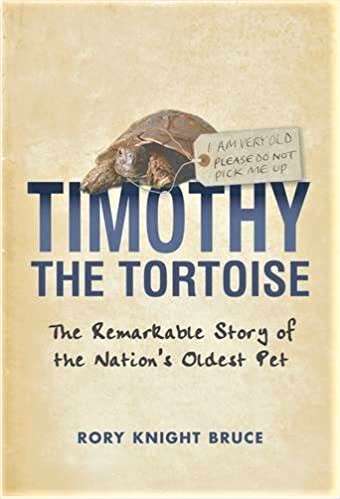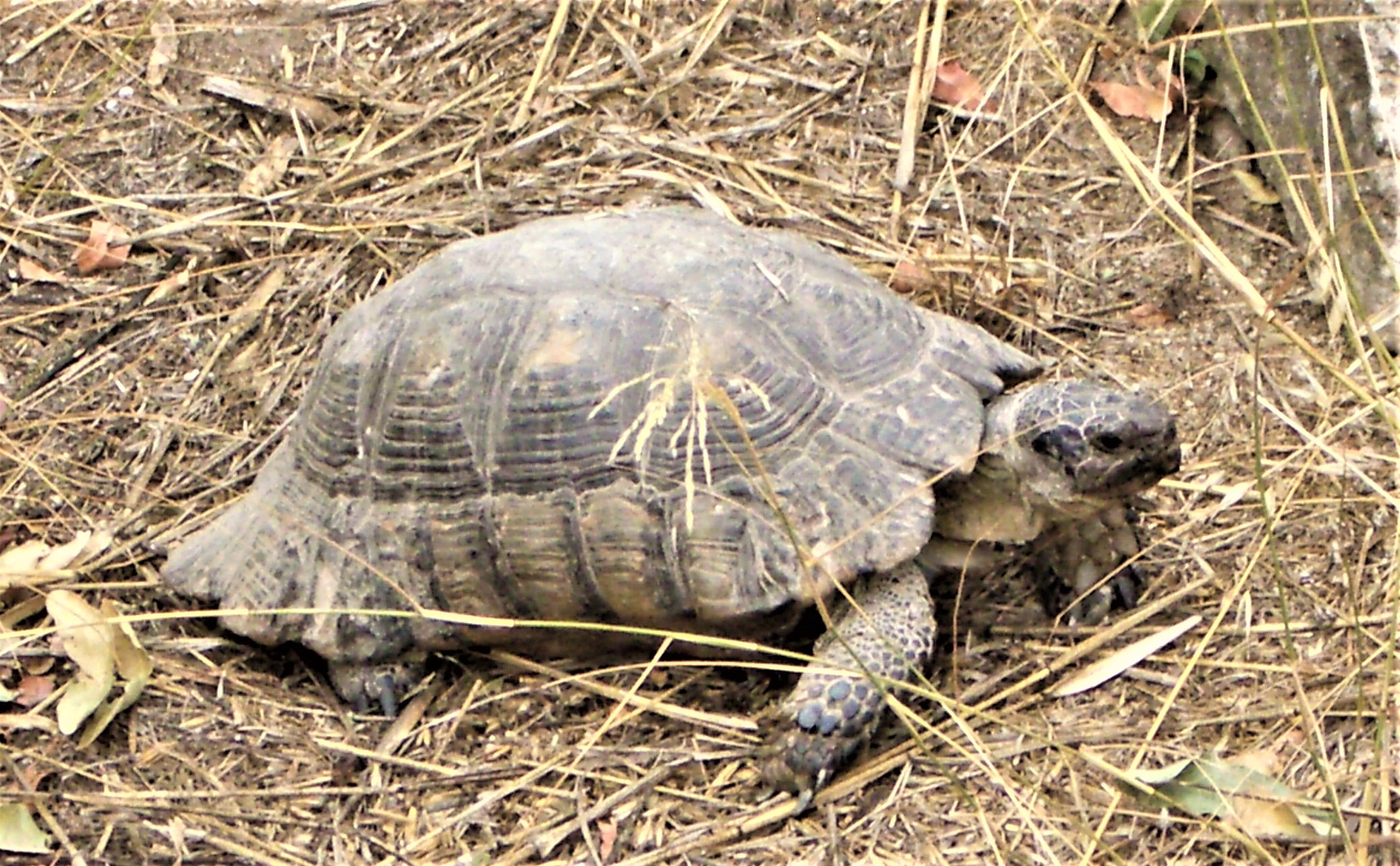
Grove Koger
I’ve reached back to 2017 for this piece, but I think it’s as relevant today as when I entered it in a contest sponsored by the Idaho Writers Guild. I’m proud to say that it won First Place in Essays that year and was subsequently published in The Amsterdam Quarterly and The Amsterdam Quarterly Yearbook.
□□□
The morning of June 24, 2012, was a somber one at the Charles Darwin Research Station. Located on the island of Santa Cruz in Ecuador’s Galapagos Archipelago, the station had long been the home of what was believed to be the last surviving Pinta Island tortoise. But that morning his caretaker, Fausto Llerena, found him dead in his corral, the apparent victim of nothing more dramatic than old age.
The tortoise had been discovered on Pinta Island in November 1971 and transported to Santa Cruz for his own good, as his subspecies—known to herpetologists as Chelonoidis nigra abingdoni—had been considered extinct since 1906. Dubbed Lonesome George, he had become an icon of efforts to preserve the earth’s endangered species.
Pinta was once home to untold numbers of George’s brethren, but they were hunted down throughout the course of the eighteenth and nineteenth centuries by pirates and whalers. Darwin commented on their decimation throughout the islands during his visit aboard the Beagle in 1835, while noting the suggestive differences among the populations as well. Then fishermen dealt another blow to the surviving tortoises by releasing goats on Pinta in 1959, planning to slaughter and eat them as needed during their long fishing expeditions. Within a decade the goat population had grown to an estimated 40,000 individuals, destroying most of the island’s plant life in the process. It was at the height of this devastation that a scientist discovered the lone tortoise, and in 1972 rangers for the Galapagos National Park transported the animal to the research station.

Over the years scientists introduced female tortoises from a closely related Isabela Island subspecies into George’s pen, hoping to produce a population that, although hybrid, would nevertheless preserve George’s DNA. When it was determined that George was actually more closely related to a subspecies on Española, two females from that island were substituted. But while the females laid several clutches of eggs, none hatched.
After George’s death, his body was transported to the American Museum of Natural History for preservation by noted taxidermist George Dante and a short period of display. “This is absolutely the most important project you could ever do in your life,” Dante says of the assignment. Determined to capture the tortoise’s personality as well as preserve his body, he questioned those who had taken care of the animal. “Everyone you talked to had a different story about George,” he recalls. “They knew every wrinkle on this animal.”
Preserved in a suitably regal and lifelike stance, George’s body was scheduled for permanent exhibit at the Santa Cruz research station where he had lived so long. However, Ecuadorian officials insisted that he be displayed in the country’s capital, Quito, where environmental conditions could be controlled more carefully, and a bronze replica shipped to Santa Cruz.

Questions of extinction aside—and they are certainly profound ones—there’s something about tortoises that appeals deeply to us. “Poor, lumbering creatures” we say, admiring their stubborn patience yet thankful not to be in their place. Of course George is far from being the first individual tortoise to have caught the attention of mankind. Think of Aesop’s fable in which the hare, certain of winning the race, settles down for a nap, while the tortoise—stubbornly and patiently—pushes on to the finish line.
Eighteenth-century English naturalist Gilbert White wrote affectionately of a Greek, or spur-thighed tortoise (Testudo graeca) named Timothy who had been bought from a sailor in 1740 and was eventually given free range of White’s garden at Selborne in Hampshire. (The designation “Greek” refers to the species of tortoise rather than its original home, which in Timothy’s case was never known.) Upon Timothy’s disappearance from the garden in late spring of 1784, White lamented that he “should be sorry to lose so old a domestic, who has behaved himself in so blameless a manner in the family for near fifty years.” Fortunately the old boy was found ten days later in a nearby field. Timothy died at about the age of 64 in 1794, surviving his famous owner by one year, and was only then identified as being an old girl.

Yet another spur-thighed tortoise named Timothy was a well-known resident of the rose garden of Powderham Castle in Devonshire until 2004. Taken off a Portuguese ship in 1854 during the Crimean War, he lived as a mascot aboard various vessels of the Royal Navy until given a home with the Courtenay family. Apparently perturbed by the vibrations of bombs dropping on nearby Exeter during a much later conflict—World War II—Timothy dug himself a shelter under a set of terrace steps. He was 160 or so at the time of his death. His last owner, Lady Gabrielle Courtenay, who was then 91 herself, remarked that “you could call him, and he would come and say hello and have a strawberry.” In 1926 a scientist had determined that, like White’s beloved reptile, this Timothy was actually a female, but the name stuck.
To this day a genuinely Greek tortoise, but one of undetermined gender, lives in the ancient Agora in Athens, where it has become something of a tourist attraction. Maggie and I encountered it one afternoon in 2011 as it trudged through the dry grass for a drink at a shallow basin provided by the Agora’s staff, then retreated to a sheltered corner amidst a tumble of ancient masonry. Its life appears carefree, but in the midst of the economic calamity that has befallen Greece, it’s hard not to view its stubbornness and patience—those qualities again!—in a symbolic light. The animal has appeared in several YouTube videos, and may well be of greater interest to many tourists than the ruins it lives amidst.

Today Pinta is goat-free, thanks to a project in which the island’s feral invaders were hunted down, but no more of its once-plentiful tortoises have been found. So is this the end of the line for Chelonoidis nigra abingdoni? Maybe not. After Lonesome George’s death, it was discovered that seventeen tortoises from the remote Volcano Wolf area of Isabela Island (the home, you’ll remember, of the first of George’s would-be mates) actually carry some of the genes of the Pinta Island tortoise, and that one of them is an eighty percent match. Given that five of the seventeen are juveniles, there’s a distinct possibility that purebred examples may yet live in the same area.
Others tortoises from Volcano Wolf carry the genes of the Floreana Island tortoise, also considered extinct. Authorities suspect that the crews of whaling vessels may have captured the Pinta and Floreana tortoises for food but later threw them overboard when they weren’t needed. Over the subsequent decades the animals would have mated with their distant Isabela relatives—or maybe, just maybe, among themselves.
Now efforts are underway to establish a captive-breeding program for the two subspecies, with plans of eventually reintroducing them to their original homes to help restore the islands’ ecosystems. “The word ‘extinction’ signifies the point of no return,” explains Yale University professor Dr. Adalgisa Caccone, a member of the research team working on Isabela. “Yet new technology can sometimes provide hope in challenging the irrevocable nature of this concept.”
And maybe, just maybe, George’s cousins will win their crucial race after all.
□□□
The image at the top of today’s post is a stamp from Ecuador commemorating the death of Lonesome George. (In case you’re wondering, modern stamps from the country routinely show the denomination in US dollars.) The second image, by Triiiple Threat, shows the Charles Darwin Research Station and is licensed under the Creative Commons Attribution-Share Alike 3.0 Unported license. The third image reproduces the cover of a selection from Gilbert White’s journals dealing with his spur-thighed tortoise Timothy (New York: Avon/Discus, 1982), while the fourth reproduces the cover of Rory Knight Bruce’s 2004 book about Powderham Castle’s Timothy (London: Orion). The photograph of the Greek tortoise near the bottom is one we took in Athens’ Agora.








